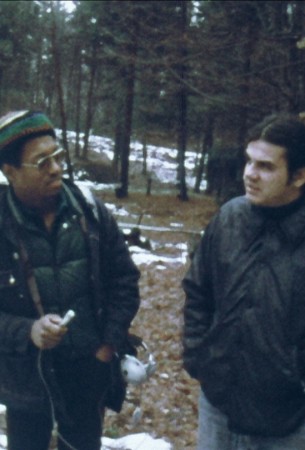
Mohawk Nation 1978
Distributed by Third World Newsreel, 545 Eighth Avenue, Suite 550, New York, NY 10018; 212-947-9277
Produced by Third World Newsreel
Directed by Allan Siegel
Streaming, 46 mins
College
Activism; Human Rights; Native Americans; Native Peoples
Date Entered: 08/03/2020
Reviewed by Patrick Crowley, Metadata Librarian for Cataloging and Digital Projects, Southern Connecticut State UniversityMohawk Nation is a tight 46-minute documentary directed by Allan Siegel for Third World Newsreel that records the 1974-1977 reoccupation of land near Altona, New York, by members of the Mohawk Nation. The film’s first 20 minutes, told through three primary voices, focus on the social and economic situation on the Akwesasne reservation. The remaining footage records the establishment of a traditionally-focused settlement, Ganienkeh, by people from Akwesasne and other Mohawk reservations on state land through interviews with a wide cross-section of the inhabitants, including the women organizers and, crucially, through candid filming of life in the settlement.
This documentary is a valuable primary source document of one of the lesser-known Native land reclamation movements--one that is notable for having successfully regained sovereign land for Native peoples, unlike the more famous occupations at Alcatraz or Wounded Knee in the early 1970s. The Third World Newsreel crew were embedded in the Genienkeh community during the occupation and captured footage during the occupation. The film is remarkable for capturing not only the verbal rationale for the occupation, but also lived experience at the settlement through images of wood chopping, horse harnessing, maple syrup production, and storytelling, among other things.
The film was directed by a veteran documentary director from outside of the communities documented. However, one of the cinematographers was a Genienkeh community member, a factor which surely contributes to the immediacy and intimacy of this crucial material. Mohawk voices remain dominant throughout the film. By rejecting an overarching and omniscient narrator to situate the struggle and guide the viewer and by eliding interviewer questions wherever possible, the documentary requires that the viewer listen that much more carefully to the voices of the inhabitants of Akwesasne and the leaders and participants in the Genienkeh occupation.
These voices present an eloquent critique of the reservation system and the industrial, national, religious, and capitalist structures that are intractably intertwined with reservation governance and society. Likewise, they provide perspectives on the impetus for a return to traditional values that Genienkeh represented. In addition to focusing the short film squarely on the Mohawk people, the filmmakers take special care to situate us in the living landscapes they inhabit, both on the reservation and in the reclaimed camp. While the art and music used in some of the more dated montages seemed tone-deaf in crossing tribal lines, the credits went some way towards rectifying this by clearly citing the Native musicians and artists.
As a low-budget documentary from the mid-1970s, Mohawk Nation’s tempo and spare, meandering narrative may be distancing for modern viewers; the film print, even in its restoration, is very rough. Moreover, there is little to help situate the Genienkeh land reclamation within the wider context of Native American civil disobedience and land occupations that characterized the late 1960s and early 1970s.
In spite of this, this film has remarkable value as a primary source document. Any primary source document, and perhaps especially this film, requires contextualization to achieve its true impact. I would highly recommend this film for academic libraries that support robust departments of Native American, First Nations, or Indigenous Studies, American and Canadian History, or Political Science with Social Justice or Civil Liberties focuses. I can only recommend the film with reservations for acquisition by institutions that cannot support wider contextualization through reference resources, academic coursework, or other documentaries.